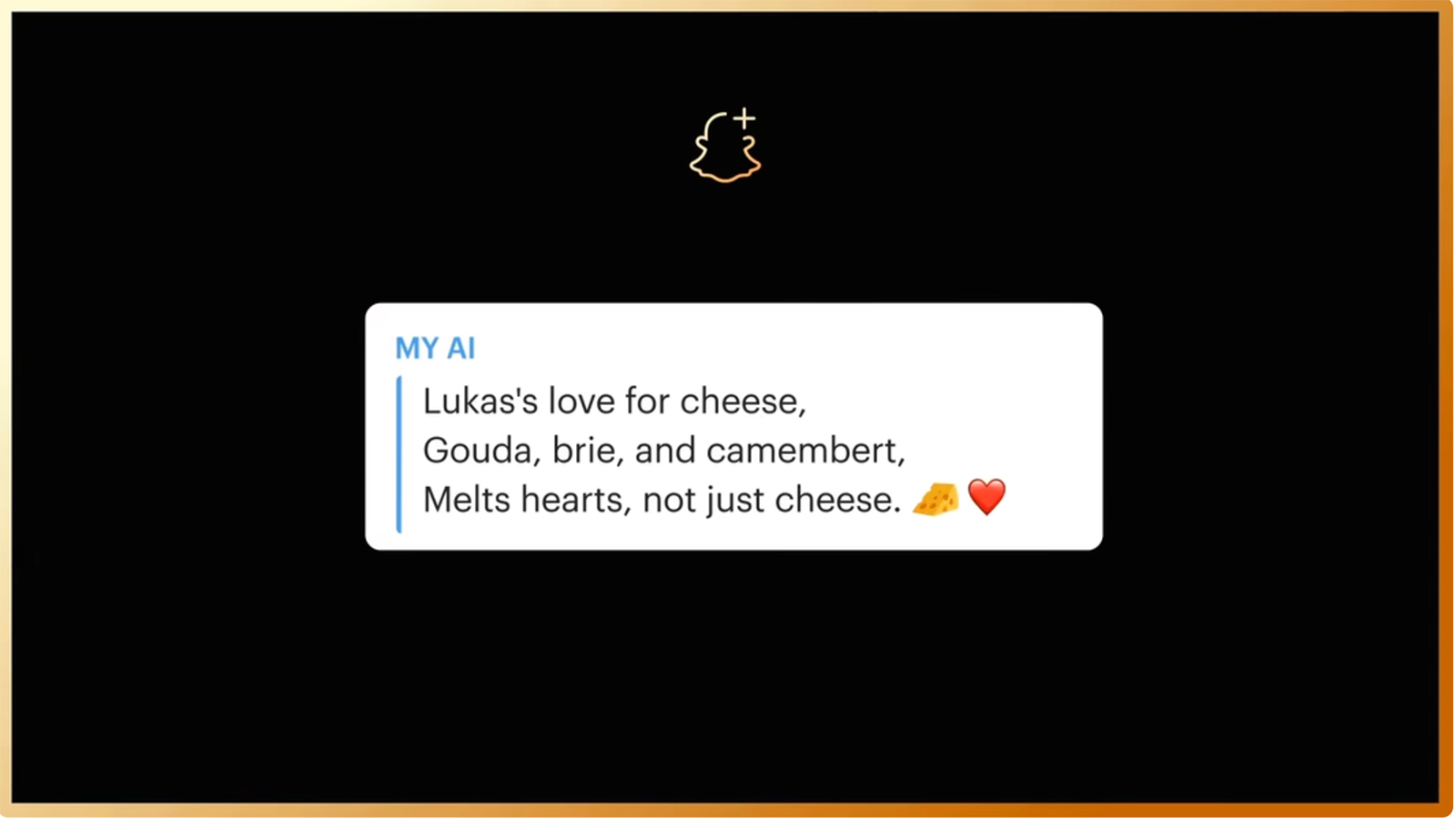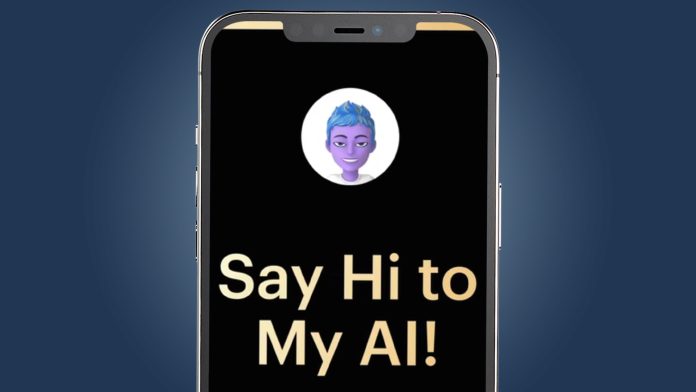Snapchat has become the first social media giant to build a ChatGPT-powered chatbot into its app, with the messaging platform calling its new feature ‘My AI’.
According to Snap, the new chatbot is running the latest version of OpenAI’s GPT technology (its GPT-3.5 model) and is an “experimental feature” for paying Snapchat Plus subscribers (a service that costs $3.99 / £3.99 / AU$5.99 a month).
So what can it do? Given the many recent examples of Microsoft’s ChatGPT-powered Bing search engine going off the rails, Snap has wisely puts some guardrails in place by training it to “avoid biased, incorrect, harmful, or misleading information”. It’s also mainly designed help organize your social life and boost your Snapchat game.
Some examples of things that My AI can help with include planning your hiking trip, recommending birthday present ideas, suggesting dinner recipes and, for fans of Japanese verse, “writing a haiku about cheese for your cheddar-obsessed pal”. That all certainly sounds a bit more family-friendly than watching Bing have an existential crisis.
Still, Snap is also bracing itself for errors and has already apologized in advance for My AI’s own clangers. It says that “My AI is prone to hallucination and can be tricked into saying just about anything”, which sounds worrying. Snap also tells users to “please be aware of its many deficiencies and sorry in advance” for its potential mistakes.
Unlike Bing’s ChatGPT-powered chatbot, My AI is customizable – you can give it a name and also customize the wallpaper for your chat sessions. But, despite this cuddly exterior, the AI helper is likely to go very wrong – with Snap stating that you can press and hold on any message to submit feedback and help guide it towards better behaviour.
Analysis: A taste of social chatbots to come

The arrival of a ChatGPT-powered helper on Snapchat isn’t quite as earth-shattering as an equivalent feature would be on the likes of Facebook, WhatsApp, Instagram, or TikTok – after all, Snapchat is only tenth on the list of social media sites in terms of global active users.
But it does give us an interesting glimpse of how ChatGPT (or an equivalent chatbot technology) could be baked into some of the world’s most popular apps. Imagine, for example, an equivalent sidekick in Facebook Messenger or WhatsApp groups. Meta did recently announce its own “state-of-the-art AI large language model called LLaMA”, so that could well be coming.
The arrival of chatbots in social media and messaging apps does also raise privacy issues. Snap is keen to stress that “all conversations with My AI will be stored and may be reviewed to improve the product experience”, and you shouldn’t “share any secrets with My AI” or “rely on it for advice”.
Those are all big disclaimers that show where we are with AI chatbots – while they’re fun sidekicks that could work well in the likes of Snapchat, they’re also far from the all-knowing sages they purport to be.


















